According to the Bureau of Labor Statistics, K-12 education is expected to grow by 4% through 2031. (Such average but steady growth is typical of education, with median pay between $50-60k per year.) Still, like the rest of the workforce, teachers are learning to adjust to an increasingly complex, fast-paced, and connected world; and, among other things, technology is a major part of the classroom now.
Most teaching positions require some form of advanced graduate degree. The most common degrees are the MEd and the MAT, or Master of Teaching. Where the MEd is typically for practicing teachers with a related bachelor’s degree (and may lead to administrative and leadership positions), the MAT is often the track of choice for aspiring, inexperienced teachers.
In other words, it’s primarily designed to teach how to teach and is slightly less in-depth than the MEd. Still, most MATs require at least 30 academic credits in addition to significant fieldwork — internships, practicums, etc. — to develop necessary instructional and classroom management skills. The Master of Arts in Teaching also typically allows students to focus on a particular block of K-12 including:
- elementary education
- secondary education
- special education
Students also complete coursework in their unique discipline. Below we’ve gathered our top 15 online tracks — including a few unique MEds — all of which are highly flexible, affordable, and customizable to accommodate a variety of distance learners. Be sure to check each site to learn more about licensure and certification options!
Related:
- Most Affordable Online Master’s in Early Childhood Education Degrees
- Best Online Masters in Reading and Literacy Degree Programs
- Top Online Master’s in Physical Education Degree Programs
- Best Online Master’s in Coaching Education Degrees
- Top Online Early Childhood Education Masters Programs
Methodology
- Affordability (1/3): the estimated out-of-state tuition per credit hour rate (if out-of-state is applicable).
- Flexibility (1/3): the number of flexibility-granting components of the program, including different specializations, prior experience credit, accelerated courses, ability to take synchronous or asynchronous coursework, and more.
- Academic Prestige (1/3): the accreditation status of a university, as well as accolades from other prominent ranking sites and educational organizations.
FEATURED ONLINE PROGRAMS
- Designed for aspiring K–12 teachers looking to gain the skills and knowledge needed to become transformative teachers who can help students succeed in any environment. Teaching credential available.
1. Western New Mexico University – Silver City, New Mexico
 Online Master of Arts in Teaching
Online Master of Arts in Teaching
Average Graduate Tuition: $343/per credit hour in-state and $685/credit out-of-state
Student to Faculty Ratio: 12:1
Founded in 1893, Western New Mexico University is a public institution with a total enrollment of over 3,500 across five campuses and online. Over half of the students are Hispanic, and WNMU is designated as a Hispanic Serving Institution; over 18 countries are represented in the university student body.
With an average class size of about 18, students benefit from an intimate educational environment that combines individualized instruction with collaborative, peer-to-peer learning opportunities. WNMU is regionally accredited by the North Central Association of Colleges and Secondary Schools.
Western New Mexico offers an online Master of Arts in Teaching that consists of 27-48 credits, depending on Elementary, Secondary Education, or Special Education tracks and experience level. Core requirements include:
- Methods of Research
- History & Philosophy of Education
- Student Growth & Development
From there, master’s degree students customize the program through a range of electives and supervised internships/fieldwork to gain real-world experience. All courses are designed for maximum flexibility to accommodate working professionals and adult learners, and there are several start dates throughout the year; part-time enrollment is available. Through the Canvas learning platform, students have easy access to:
- instructors
- group discussion boards
- live chat rooms
- video conferencing
- tech support
For those interested, WNMU also offers related online master’s in teaching and educational Leadership. This teaching program is accredited by the National Council for Accreditation of Teacher Education (NCATE).
Related: The Best 1 Year Online Master’s in Education Programs
2. American Public University – Charles Town, West Virginia
 Online Master of Education in Teaching
Online Master of Education in Teaching
Average Graduate Tuition: $455/per credit hour
Student to Faculty Ratio: 22:1
Founded in 1991, American Public University specializes in online education, with an enrollment of almost 50,000 students and offices in Charles Town, West Virginia, and Manassas, Virginia. (The APU system is also affiliated with the American Military University.) Nearly 60% of students are active duty or military veterans, and 17,000 are enrolled through the GI Bill.
In 2012, the university agreed to a corporate partnership with Walmart, which has spent $50 million on tuition grants; employees receive a 15% tuition discount. With a 22:1 student-to-faculty ratio – impressive for a school of its size – APU classes are kept small and agile to promote personalized instruction and collaborative learning.
APU’s online MEd in Teaching includes eight concentrations options including:
- Curriculum and Instruction for Elementary Teachers
- Elementary Reading
- Instructional Leadership
- English Language Learners
- Special Education
- Online Learning
- Autism Spectrum Disorder
- STEAM (STEM and the Arts)
All tracks are non-licensure. They are centered around instruction, curriculum, and professional development, and include a comprehensive study program that covers current:
- educational research
- critical analyses of classroom teaching and learning
- classroom management skills
- creating active learning environments
- interpersonal communication skills
In addition, students will complete extensive in-class work to round out an experiential, real-world-focused graduate program. This teaching degree is aligned with West Virginia Professional Teaching Standards, national content standards for elementary education, and the International Society for Technology in Education.
3. Bowling Green State University – Bowling Green, Ohio
 Master of Education Curriculum and Teaching Online
Master of Education Curriculum and Teaching Online
Average Graduate Tuition: $468 residents/$801out-of-state per credit hour
Student to Faculty Ratio: 18:1
Founded in 1910, Bowling Green is located in the eponymous Ohio city, 15 miles south of Toledo. The Carnegie Foundation has classified it as a “high research activity” school. With a total enrollment of about 17,000, from all 50 states and 70 countries, BGSU’s 18:1 student-to-faculty ratio promotes a highly collaborative learning environment while maintaining classes small enough for one-on-one instruction.
Over 40% of classes have fewer than 20 students, and less than 9% have over 49; 80% of the school’s 800+ full-time faculty hold terminal degrees. It is accredited by the Higher Learning Commission (HLC).
Bowling Green’s online MEd in Curriculum and Teaching consists of 33-36 credits. Students can choose a stackable certificate or endorsement in:
- Alternate Resident Educator
- Assistive Technology Certificate
- Autism Spectrum Disorders Certificate
- Early Childhood Generalist Endorsement
- Instructional Design Certificate
- Play and Learning Certificate
- Reading Endorsement
- Secondary Transition Certificate and/or TTW Endorsement
- Workforce Development Certificate
From there, students have customization options in the research core, then can choose between a wide range of electives.
With six start dates throughout the year, the program is designed for maximum flexibility, and accelerated seven-week course blocks allow students to complete the degree in as little as 18 months. In particular, Bowling Green’s program emphasizes a hands-on approach with a special focus on emerging classroom technologies.
4. Morningside College – Sioux City, Iowa
 Master of Education Curriculum and Teaching Online
Master of Education Curriculum and Teaching Online
Average Graduate Tuition: $348/per credit hour
Student to Faculty Ratio: 13:1
Founded in 1894, Morningside College is a private school with an enrollment of 2,300. The school’s 13:1 student-to-faculty ratio supports a tight-knit learning community capable of both collaborative learning and individualized instruction. Over 60% of classes consist of fewer than 20 students, and none have over 49. Most important: within six weeks of graduation, 99% of Morningside alumni are employed or pursuing further education.
One of the most affordable programs on the list, Morningside’s online Master of Arts in Teaching offers a program track in teacher leadership. Courses are based on the Teacher Leader Model Standards from the Teacher Leadership Exploratory Consortium. Students will use research to improve teaching and learning and promote professional learning. They gain skills in areas like:
- leading professional learning communities
- collaborative communication
- reflective teaching
Students can complete all their coursework online, allowing them to balance the demands of teaching with earning their master’s degree.
5. Hannibal-LaGrange University – Hannibal, Missouri
 Master of Science in Education
Master of Science in Education
Average Graduate Tuition: $520/per credit hour
Student to Faculty Ratio: 10:1
Hannibal-LaGrange University, founded in 1858, is a private Christian school, affiliated with the Missouri Baptist Convention, with a total enrollment of just 714, nearly all of which is undergraduate. HLU boasts a 10:1 student-to-faculty, which allows students to engage with instructors in an intimate, personalized setting while also collaborating with fellow students in and out of the classroom. Over 80% of classes consist of fewer than 20 students, and less than 1% have more than 50. For students interested in financial aid opportunities, 93% of HLU students receive some form of aid.
Hannibal-LaGrange’s online MS in Education includes tracks in:
- Teaching and Learning + Initial (Alternative) Certification
- Teaching and Learning
- Special Reading
The Teaching and Learning + Initial (Alternative) Certification is for students with a bachelor’s degree in any field of study. The program prepares students to become certified teacher. The curriculum emphasizes effective curricular/instructional planning and assessment. The Teaching and Learning Track is intended for students who want to study the principles of effective instruction. These students also get a head start on courses toward their MEd.
Lastly, the Special Reading Track focuses on the research-based components of effective reading instruction and assessment. This program is designed for students with early childhood, elementary, or secondary teacher certification.
These programs align with the National Board for Professional Teaching Standards, with the aim to:
- utilize the latest concepts, theories, and research to enhance student learning
- create and implement effective classroom instruction and assessments
In addition to rigorous curricula, all students must complete portfolio requirements after each course, demonstrating a grasp of both theoretical and real-world knowledge. The one-year, cohort model is ideal for working teachers, and student services include:
- academic advising
- tech support
- career services
- registration assistance
- library services
6. Bethel University – Mishawaka, Indiana
 Master of Arts in Teaching
Master of Arts in Teaching
Average Graduate Tuition: $535/per credit hour
Student to Faculty Ratio: 11:1
Founded in 1947, Bethel College, in Mishawaka, IN, is a private Christian school affiliated with the Missionary Church, with a total enrollment of about 1,700, the majority of which is undergraduate. Ranked among the best schools in the Midwest region, Bethel’s excellent 12:1 student-to-faculty ratio promotes a dynamic learning environment that balances individualized, tailored instruction with collaborative education.
Over 65% of classes have fewer than 20 students, and just 2% have 50 or more. In addition to rigorous course work, Bethel emphasizes a hands-on pedagogical approach through internships, service opportunities, and other co-curricular programs. Of particular note: Bethel has a proven track record of work placement, and several programs have a 99-100% placement rate.
Bethel’s online MAT consists of 36 credits, the first 18-24 credits of which are part of the Transition to Teaching component, which includes foundational coursework with a cohort group. (This component includes Elementary and Secondary specializations.) From there, students complete core requirements in:
- Teaching in the 21st Century
- Classroom Environment
- Fieldwork
Students then customize their curriculum through a variety of electives. For maximum flexibility, students have the option to complete the teaching degree in as little as 12 months on a full-time basis, and students with previous academic credits may transfer a limited amount into the program, further accelerating course work. Student services include:
- tech support
- advising
- career services
- academic success center
7. Mississippi College – Clinton, Mississippi
 Master of Education Online
Master of Education Online
Average Graduate Tuition: $400/per credit hour
Student to Faculty Ratio: 13:1
Founded in 1826, Mississippi College is a private Christian school affiliated with the Mississippi Baptist Convention, with a total enrollment of just over 4,250, 60% of which is undergraduate. With a student-to-faculty ratio of 13:1, classes are intimate and allow for one-on-one instruction while also promoting collaborative learning.
Nearly 60% of classes consist of fewer than 20 students and less than 2% have 50 or more. As a Christian institution, all programs integrate religious values into the curriculum, and the school places an emphasis on the synthesis of faith, lifelong learning, and service.
Mississippi College offers online their Master of Education degree in five different areas including:
- Teaching Arts
- Elementary Education
- Special Education
- Educational Leadership
- Curriculum and Instruction
The Teaching Arts MEd program is designed for teachers with a bachelor’s degree who want to teach in schools as a licensed educator in a K-12 classroom.
All courses are 100% online, and there are multiple start dates throughout the year for maximum flexibility, accommodating working teachers and adult learners. Some tracks can be completed on an accelerated basis in as little as 10 months.
Utilizing a transcultural and faith-based curriculum (3-39 credits), MC emphasizes in-class technology integration and the development of instructional and classroom management skills for a diverse set of learners. This online master’s degree meets nationwide teaching standards. In addition, students will complete a variety of seminars, practicums, and internships to build a workable, real-world framework from which to build. All programs are accredited by the National Council for the Accreditation of Teacher Education.
8. William Woods University – Fulton, Missouri
 Online Master of Education in Teaching and Technology
Online Master of Education in Teaching and Technology
Average Graduate Tuition: $475/per credit hour
Student to Faculty Ratio: 10:1
Founded in 1870, William Woods University, in Fulton, MO, is a private university with an enrollment of 1,737. Considered one of the best schools in the Midwest region, William Woods’s 10:1 student-to-faculty ratio creates an intimate, collaborative learning environment. Nearly 80% of classes consist of less than 20 students – none have more than 49. To support William Woods’s liberal arts mission, the school implemented its unique LEAD program (Leading, Educating, Achieving, and Developing), which promotes dynamic community engagement through a variety of extracurricular and interdisciplinary activities; since its launch, LEAD has been profiled by the BBC, NPR, the New York Times, and the Los Angeles Times, among other outlets. The school’s 20,000 active alumni across the world include industry leaders in:
- technology
- business
- finance
Alumni also include politicians, writers, and professional athletes.
William Woods’s online MEd in Teaching and Technology consists of 30 credits, covering areas like:
Current Issues in Teaching and Learning
- Research Design
- Teaching and Learning in the New Digital Landscape
- Digital Tools for Academic Programs
- Instructional Design with Technology
- Integration of Multimedia Production and Curriculum
- Teaching and Technology Capstone Project
- Appraisal of Student Learning
No bachelor’s degree in education is required for admission, and the track is open to working teachers, adult learners, and any other professionals with an interest in instructional technology. Teachers holding eMINTS certification may be eligible for up to 9 transfer credits.
With six entry dates available throughout the year, the program is highly flexible; it aligns with the National Board of Professional Teaching Standards and National Education Technology Standards.
9. Kansas State University – Manhattan, Kansas
 Master of Arts in Teaching
Master of Arts in Teaching
Average Graduate Tuition: $551/per credit hour
Student to Faculty Ratio: 19:1
Kansas State University, founded in 1863, is the state’s oldest public university. With an enrollment of over 20,000, from all 50 states and over 100 countries, KSU is a Carnegie R1 research university and ranks first among public schools for its 124 Rhodes, Marshall, Truman, Goldwater, and Udall scholars. With a 19:1 student-to-faculty ratio, KSU is able to support a vibrant, collaborative educational community that also delivers the personalized instruction of a smaller school. Over 40% of classes have fewer than 20 students, and just 13% have 50 or more.
Designed for aspiring elementary school teachers, Kansas State offers an online MAT that consists of 31 credits and can be completed in as little as 12 months on an accelerated basis. Example courses include:
- Social Foundations of Education
- Teaching Diverse Learners
- Curriculum, Instruction and Assessment
- Teaching Health, Movement and Fine Arts
- Teaching Science and Mathematics in the Elementary School
All courses deliver online in a cohort model, and there are several internships, practicums, and projects built into the curriculum to ensure students receive significant classroom experience. Applicants should have earned a 3.0 undergraduate GPA and must submit GRE scores. The program is accredited by the National Council for Accreditation of Teacher Education (NCATE) and the Kansas State Department of Education (KSDE).
10. Stevenson University – Owings Mills, Maryland
 Master of Arts in Teaching: STEM Focus
Master of Arts in Teaching: STEM Focus
Average Graduate Tuition: $505/per credit hour
Student to Faculty Ratio: 15:1
Founded in 1947, Stevenson University is a private school with a total enrollment of about 3,400. Ranked among the best schools in the North region, Stevenson receives particular marks for overall value and veteran services. The 15:1 student-to-faculty ratio helps to support a tight-knit educational setting that combines the best of a small liberal arts community with a larger school’s dynamic, vibrant atmosphere.
Nearly 70% of classes have less than 20 students, and none have more than 49. Over 90% of alumni report being employed or pursuing advanced degrees within six months of graduation.
Stevenson’s online MAT, consisting of 33 credits, offers content licensures in:
- Secondary Biology
- Chemistry
- Earth/Space Science
- Physical Science Education
- Physics
- Mathematics
Core requirements include:
- STEM Curriculum Principles and Practice
- Principles of Assessment
- Principles of Special Education
All students must complete a professional internship (grades 7-12) to gain real-world, in-class experience and demonstrate classroom proficiency. The cohort-based teaching program progresses in accelerated 8-week modules, and all coursework is designed for maximum flexibility to accommodate adult learners.
Upon graduation, all students will be able to plan and implement problem-based lessons that align with NSTA Next Gen Science Standards, NCTM Principles to Action, and Common Core State Standards. Applicants should have earned a 3.0 undergraduate GPA and must submit test scores.
11. Northern Illinois University – Dekalb, Illinois
 Master of Arts in Teaching: Elementary Education with Licensure
Master of Arts in Teaching: Elementary Education with Licensure
Average Graduate Tuition: $533/per credit hour
Student to Faculty Ratio: 15:1
Northern Illinois University was chartered in 1895 as a teachers’ school. Today, NIU is a world-class, research-focused public institution that attracts students from around the globe. NIU offers over 200 different student organizations and 42 academic departments. NIU is accredited by the Higher Learning Commission.
The Master of Arts in Teaching program from NUI is an online evening program for students with a bachelor’s degree in any field. Students will be prepared to teach first through sixth grades in Illinois public schools. The 45-credit hour program includes five credit hours of student teaching experience. Students will complete their student teaching in a school during the day in their own community.
New students are admitted during the fall and spring semesters. Students can begin their studies as a student-at-large while they wait for an official admission decision.
12. Georgia College and State University – Milledgeville, Georgia
 Secondary Education Master of Arts in Teaching
Secondary Education Master of Arts in Teaching
Average Graduate Tuition: $288/per credit hour
Student to Faculty Ratio: 16:1
Georgia College and State University was founded in 1889 as a women’s educational center. Today, GCSU is a designated public liberal arts university in the University System of Georgia. Their historic campus offers a close-knit community and a sense of campus pride. GCSU is accredited by the Southern Association of Colleges and Schools, Commission on Colleges.
GCSU offers an online Master of Arts in Teaching with a focus on Secondary Teacher Education. The program is open to students with a bachelor’s degree from a regionally accredited institution. Students can prepare for certification to teach grades 6-12 in:
- Biology
- Business Education
- Chemistry
- English
- History
- Mathematics
- Physics
- Political Science
Students can also become certified to teach P-12 in the areas of art, French, and Spanish. To earn a teaching license, students must have 21 content hours above the core level in the certification discipline they are seeking.
This online teaching degree begins in the summer or fall and is a four-semester program. All students must complete field experience and an internship.
13. Missouri Baptist University – Saint Louis, Missouri
 Online Master of Arts in Teaching
Online Master of Arts in Teaching
Average Graduate Tuition: $599/per credit hour
Student to Faculty Ratio: 20:1
Missouri Baptist University is a Christian university located near St. Louis, Missouri. They award more than 40 undergraduate and grade degrees. MBU is one of three universities of the Missouri Baptist Convention. MBU is accredited by the Higher Learning Commission.
Missouri Baptist University features an online Master of Arts in Teaching that takes about 24 months to complete. The program is designed for certified teachers who want to earn an additional certification area. The online program is a great choice for:
- Educators
- Curriculum Developers
- Educational Policy Developers
The online curriculum provides flexibility for working professionals. All courses are taught by faculty who teach from a Christian perspective.
14. Concordia University – Chicago, Illinois
 Online Master of Arts in Teaching
Online Master of Arts in Teaching
Average Graduate Tuition: $505/per credit hour
Student to Faculty Ratio: 13:1
Concordia University Chicago is a Lutheran university founded in 1864. CUC has over 6,000 full-time students. They are one of eight colleges and universities associated with the Concordia University System. CUC is accredited by the Higher Learning Commission.
The Master of Arts in Teaching program is designed for students who seek their initial teaching license in Illinois. Many courses are offered online, both asynchronously and synchronously. Field experience observations are scheduled during normal school hours. Teaching programs include:
- Elementary Education
- Middle Grades Education
- Secondary Education
CUC’s programs emphasize:
- commitment to continuous improvement
- standards within the profession
- respect and diversity in education
- collaborative relationships
15. University of Southern California – Los Angeles, California
 Online Master of Arts in Teaching
Online Master of Arts in Teaching
Average Graduate Tuition: $2,267/per credit hour
Student to Faculty Ratio: 9:1
The University of Southern California is a private research university with almost 50,000 students. USC has a distinguished faculty of over 4,000 scholars, researchers, and teachers including five Nobel laureates. USC provides over $640 million in scholarships and aid. Students from families making under $80,000/year attend tuition free.
UNC offers an online Master of Arts in Teaching that prepares students to earn a teaching credential in the state of California. Students attend live, online classes and complete coursework on their own time. Courses are taught by experienced teachers who understand the needs of online learners. The curriculum is focused on:
- Theory
- Application
- Mastery
Students can choose to concentrate on multiple subjects or a single subject. The multiple-subject credential allows students to teach a variety of primary school subjects to kids in grades K-6. The single-subject certification prepares students to teach secondary education subjects to both middle and high school students.



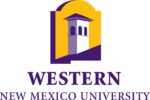 Online Master of Arts in Teaching
Online Master of Arts in Teaching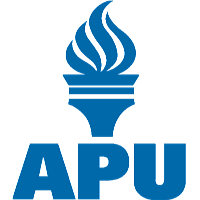 Online Master of Education in Teaching
Online Master of Education in Teaching Master of Education Curriculum and Teaching Online
Master of Education Curriculum and Teaching Online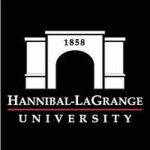 Master of Science in Education
Master of Science in Education Master of Arts in Teaching
Master of Arts in Teaching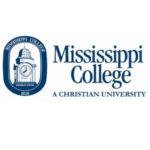 Master of Education Online
Master of Education Online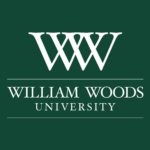 Online Master of Education in Teaching and Technology
Online Master of Education in Teaching and Technology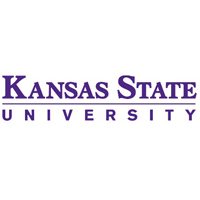 Master of Arts in Teaching
Master of Arts in Teaching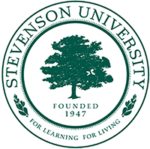 Master of Arts in Teaching: STEM Focus
Master of Arts in Teaching: STEM Focus Master of Arts in Teaching: Elementary Education with Licensure
Master of Arts in Teaching: Elementary Education with Licensure Online Master of Arts in Teaching
Online Master of Arts in Teaching